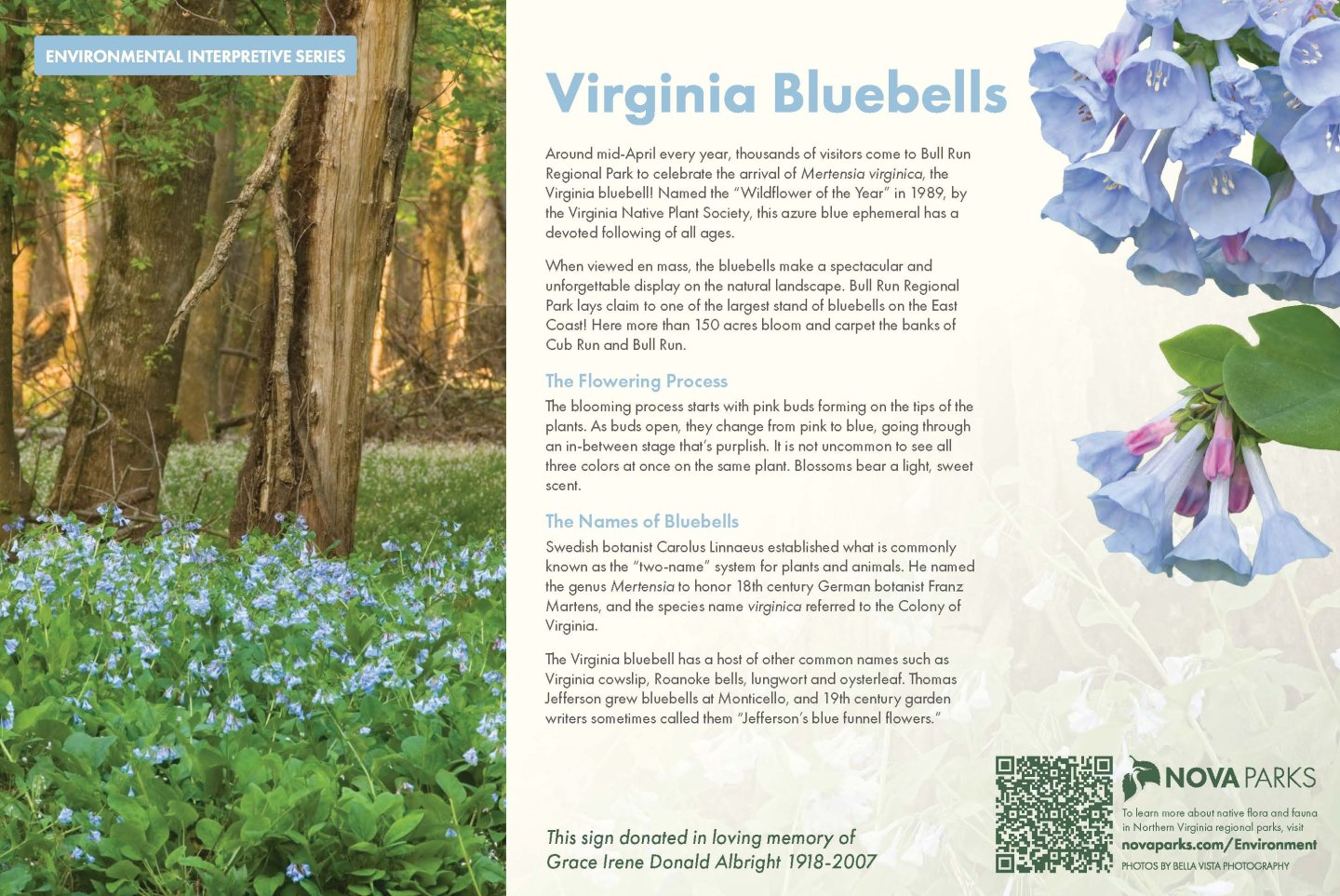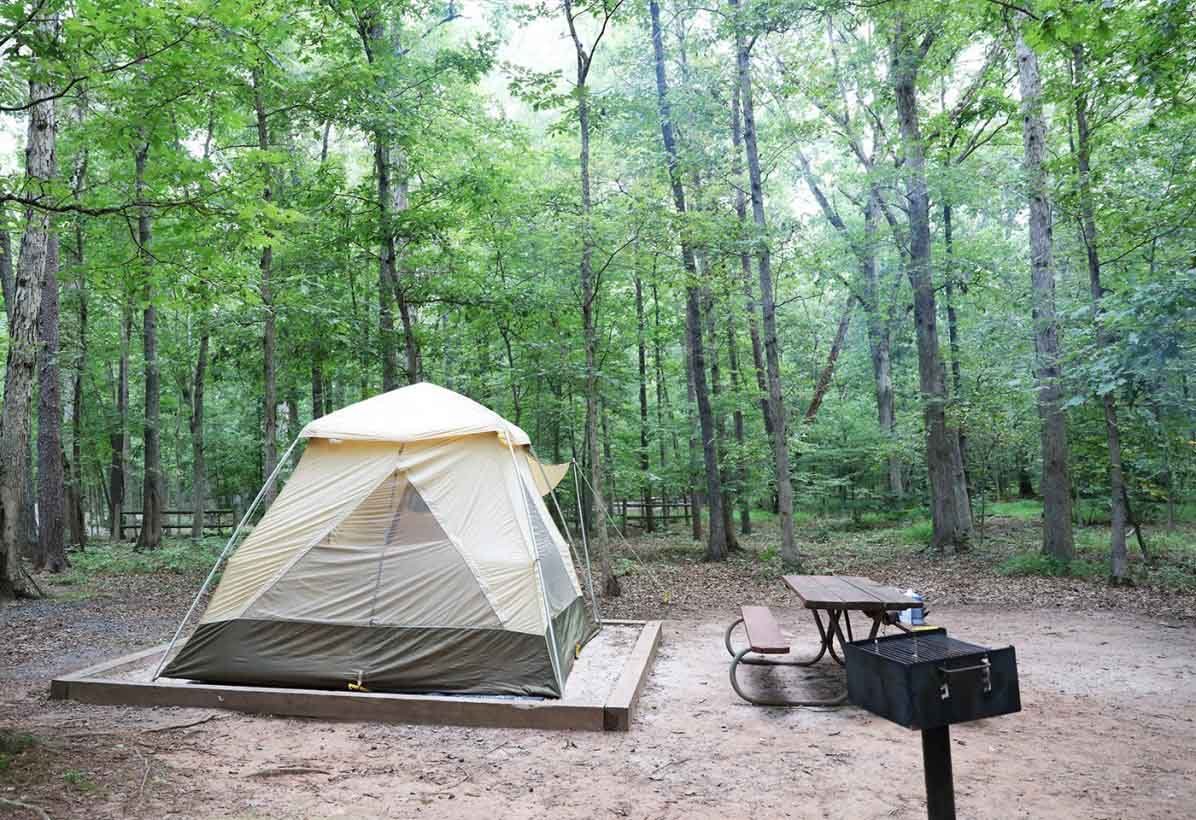Bull Run Regional Park
Environmental Interpretive Series: Virginia Bluebells

Around mid-April every year, thousands of visitors come to Bull Run Regional Park to celebrate the arrival of Mertensia virginica, the Virginia bluebell! Named the “Wildflower of the Year” in 1989, by the Virginia Native Plant Society, this azure blue ephemeral has a devoted following of all ages.
When viewed en mass, the bluebells make a spectacular and unforgettable display on the natural landscape. Bull Run Regional Park lays claim to one of the largest stand of bluebells on the East Coast! Here more than 150 acres bloom and carpet the banks of Cub Run and Bull Run.
The Flowering Process
The blooming process starts with pink buds forming on the tips of the plants. As buds open, they change from pink to blue, going through an in-between stage that’s purplish. It is not uncommon to see all three colors at once on the same plant. Blossoms bear a light, sweet scent.
The Names of Bluebells
Swedish botanist Carolus Linnaeus established what is commonly known as the “two-name” system for plants and animals. He named the genus Mertensia to honor 18th century German botanist Franz Martens, and the species name virginica referred to the Colony of Virginia.
The Virginia bluebell has a host of other common names such as Virginia cowslip, Roanoke bells, lungwort and oysterleaf. Thomas Jefferson grew bluebells at Monticello, and 19th century garden writers sometimes called them “Jefferson’s blue funnel flowers.”


